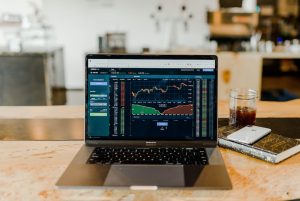Forex, also known as foreign exchange, is the largest and most liquid financial market in the world. It involves the buying and selling of currencies, with traders making profits from fluctuations in exchange rates. Unlike other financial markets such as stocks, futures, and options, forex doesn’t show volume. This can be confusing for traders, especially those who are used to analyzing volume in other markets. In this article, we’ll explore the reasons why forex doesn’t show volume.
Firstly, it’s important to understand what volume is. In financial markets, volume refers to the number of shares, contracts, or units that are traded in a given period. It’s a measure of market activity and can be used to gauge the level of interest in a particular security or asset. When there’s high volume, it means there are many buyers and sellers in the market, creating more liquidity and potentially more trading opportunities.
In the forex market, however, there’s no centralized exchange or clearinghouse where trading takes place. Instead, forex is traded over-the-counter (OTC), meaning that transactions are conducted directly between buyers and sellers through electronic networks. There’s no physical location where traders can gather to buy and sell currencies, as is the case with stock exchanges.
Because there’s no central exchange, it’s difficult to track the volume of trades in the forex market. Unlike stocks, where the volume of shares traded is recorded and reported in real-time, there’s no central repository of data for forex trades. The market is decentralized and fragmented, with different brokers and liquidity providers offering different prices and spreads. This makes it challenging to accurately measure the volume of trades taking place.
Another reason why forex doesn’t show volume is that the market is highly leveraged. Forex traders can trade on margin, which means they can control large positions with a relatively small amount of capital. This leverage can amplify profits and losses, and it also means that traders can enter and exit positions quickly and easily. As a result, the volume of trades in the forex market can fluctuate rapidly and unpredictably, making it difficult to track.
Instead of volume, forex traders often rely on other indicators to gauge market activity and sentiment. These include price action, technical analysis, and fundamental analysis. Price action refers to the movement of prices over time, and traders use charts and technical indicators to identify patterns and trends. Fundamental analysis involves analyzing economic data and news events to determine the underlying factors affecting exchange rates.
In conclusion, forex doesn’t show volume because it’s an over-the-counter market with no central exchange or clearinghouse. The market is highly fragmented and decentralized, making it difficult to track the volume of trades. Instead of volume, forex traders rely on other indicators such as price action, technical analysis, and fundamental analysis to gauge market activity and sentiment. While volume is an important measure of market activity in other financial markets, it’s not as relevant in the forex market due to its unique characteristics.






